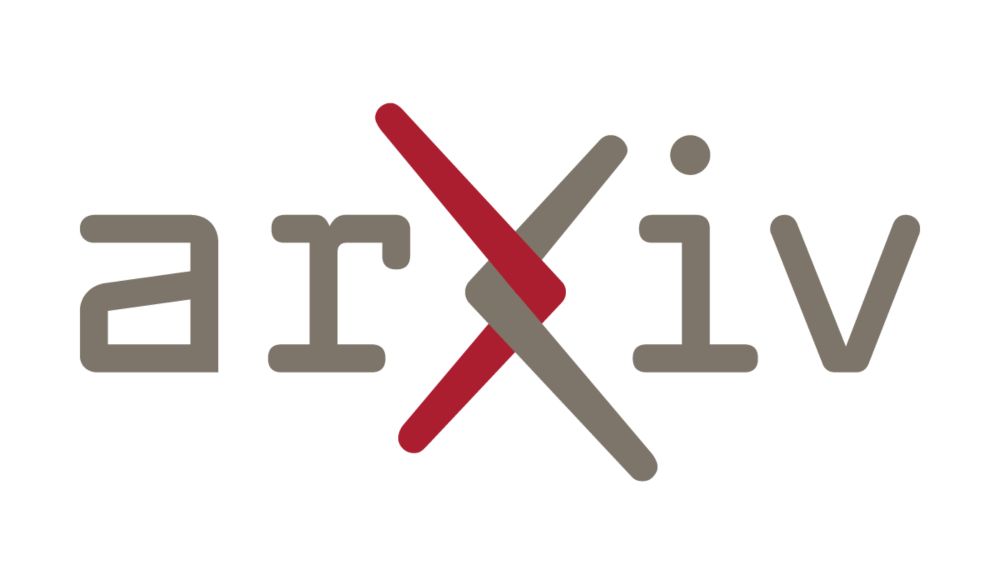Golub Capital Social Impact Lab
@gsbsilab.bsky.social
Led by @susanathey.bsky.social, the Golub Capital Social Impact Lab at the Stanford University Graduate School of Business uses digital technology and social science to improve the effectiveness of social sector organizations.
Stay tuned – R package coming soon!
October 20, 2025 at 5:21 PM
Stay tuned – R package coming soon!
In our theory, we show how the estimator’s bias depends on product of imbalance across units, time and bias of the regression adjustment, so that effectively only one of these three needs to be small. This gives flexibility in the choice of unit, time weights and outcome model.

October 20, 2025 at 5:21 PM
In our theory, we show how the estimator’s bias depends on product of imbalance across units, time and bias of the regression adjustment, so that effectively only one of these three needs to be small. This gives flexibility in the choice of unit, time weights and outcome model.
This isn't surprising if it’s common that heterogeneity across units can be approximated with a few unobserved factors and the impact of each factor varies over time. This implies that we shouldn't assign the same weights to units far in time and we should accurately model interactive fixed effects.
October 20, 2025 at 5:21 PM
This isn't surprising if it’s common that heterogeneity across units can be approximated with a few unobserved factors and the impact of each factor varies over time. This implies that we shouldn't assign the same weights to units far in time and we should accurately model interactive fixed effects.
We find substantial heterogeneity in performance of common methods. TROP outperforms all competitors in 20 of 21 simulation designs. Empirically additive time and unit effects rarely capture all of the predictable patterns. Instead interactive latent factor structures often fit the data much better
October 20, 2025 at 5:21 PM
We find substantial heterogeneity in performance of common methods. TROP outperforms all competitors in 20 of 21 simulation designs. Empirically additive time and unit effects rarely capture all of the predictable patterns. Instead interactive latent factor structures often fit the data much better
In contrast, TROP embeds all these estimators as special cases, while it learns which components of such estimators are most relevant to accurately predict the counterfactual. We evaluate TROP through a large set of simulation studies calibrated to match real-world applications.

October 20, 2025 at 5:21 PM
In contrast, TROP embeds all these estimators as special cases, while it learns which components of such estimators are most relevant to accurately predict the counterfactual. We evaluate TROP through a large set of simulation studies calibrated to match real-world applications.
Why this matters: TROP learns the combination of time, unit weights and regression adjustments that most accurately predict the counterfactual as below. Common estimators of causal effects in panel data (DID/TWFE, SC, MC, SDID) rest on different assumptions, but all can fail in applications.

October 20, 2025 at 5:21 PM
Why this matters: TROP learns the combination of time, unit weights and regression adjustments that most accurately predict the counterfactual as below. Common estimators of causal effects in panel data (DID/TWFE, SC, MC, SDID) rest on different assumptions, but all can fail in applications.
TROP is “triply robust” – error is the product of the errors in the three components: imbalance betw/ treated and control periods, betw/ treated and control units and and misspecification of the regression adjustment (only one needs to perform well)
October 20, 2025 at 5:21 PM
TROP is “triply robust” – error is the product of the errors in the three components: imbalance betw/ treated and control periods, betw/ treated and control units and and misspecification of the regression adjustment (only one needs to perform well)
TROP estimates causal effects in panel models by combining (i) a flexible outcome model (regularized low-rank factors + FE), (ii) unit weights, and (iii) time weights.
October 20, 2025 at 5:21 PM
TROP estimates causal effects in panel models by combining (i) a flexible outcome model (regularized low-rank factors + FE), (ii) unit weights, and (iii) time weights.
And learn more about surrogate indices in the papers by @susanathey.bsky.social, Raj Chetty, Guido Imbens, and Hyunseung Kang.
www.nber.org/papers/w26463
arxiv.org/abs/2006.09676
www.nber.org/papers/w26463
arxiv.org/abs/2006.09676

The Surrogate Index: Combining Short-Term Proxies to Estimate Long-Term Treatment Effects More Rapidly and Precisely
Founded in 1920, the NBER is a private, non-profit, non-partisan organization dedicated to conducting economic research and to disseminating research findings among academics, public policy makers, an...
www.nber.org
August 27, 2025 at 6:33 PM
And learn more about surrogate indices in the papers by @susanathey.bsky.social, Raj Chetty, Guido Imbens, and Hyunseung Kang.
www.nber.org/papers/w26463
arxiv.org/abs/2006.09676
www.nber.org/papers/w26463
arxiv.org/abs/2006.09676
Learn more about how ratings, measurement, nudges, and dashboards are used to support service quality on online platforms in the paper by @susanathey.bsky.social, Juan Camilo Castillo, & Bharat Chandar
www.nber.org/papers/w33087
www.nber.org/papers/w33087

Service Quality on Online Platforms: Empirical Evidence about Driving Quality at Uber
Founded in 1920, the NBER is a private, non-profit, non-partisan organization dedicated to conducting economic research and to disseminating research findings among academics, public policy makers, an...
www.nber.org
August 22, 2025 at 7:09 PM
Learn more about how ratings, measurement, nudges, and dashboards are used to support service quality on online platforms in the paper by @susanathey.bsky.social, Juan Camilo Castillo, & Bharat Chandar
www.nber.org/papers/w33087
www.nber.org/papers/w33087
Watch @Susan_Athey’s talk on the implications of AI on the organisation of industry and work at #G20SouthAfrica
www.youtube.com/watch?v=okDG...
www.youtube.com/watch?v=okDG...

#G20SouthAfrica Side event — The implications of Al on the organisation of industry and work
YouTube video by SAReserveBank
www.youtube.com
July 18, 2025 at 1:06 PM
Watch @Susan_Athey’s talk on the implications of AI on the organisation of industry and work at #G20SouthAfrica
www.youtube.com/watch?v=okDG...
www.youtube.com/watch?v=okDG...
The talk will cover:
✔️How AI is altering industry dynamics & structures
✔️How these shifts will impact public services such as health and education
✔️How AI market concentration could tax the global economy
✔️Why govt policy will be crucial in shaping AI competition and innovation
✔️How AI is altering industry dynamics & structures
✔️How these shifts will impact public services such as health and education
✔️How AI market concentration could tax the global economy
✔️Why govt policy will be crucial in shaping AI competition and innovation
July 15, 2025 at 1:42 PM
The talk will cover:
✔️How AI is altering industry dynamics & structures
✔️How these shifts will impact public services such as health and education
✔️How AI market concentration could tax the global economy
✔️Why govt policy will be crucial in shaping AI competition and innovation
✔️How AI is altering industry dynamics & structures
✔️How these shifts will impact public services such as health and education
✔️How AI market concentration could tax the global economy
✔️Why govt policy will be crucial in shaping AI competition and innovation
Beyond predictions, @keyonv.bsky.social also worked with @gsbsilab.bsky.social to show how these models can be used to make better estimations of important problems, such as the gender wage gap among men and women with the same career histories. Learn more here: bsky.app/profile/gsbs...
Foundation models make great predictions. How should we use them for estimation problems in social science?
New PNAS paper @susanathey.bsky.social & @keyonv.bsky.social & @Blei Lab:
Bad news: Good predictions ≠ good estimates.
Good news: Good estimates possible by fine-tuning models differently 🧵
New PNAS paper @susanathey.bsky.social & @keyonv.bsky.social & @Blei Lab:
Bad news: Good predictions ≠ good estimates.
Good news: Good estimates possible by fine-tuning models differently 🧵

June 30, 2025 at 3:39 PM
Beyond predictions, @keyonv.bsky.social also worked with @gsbsilab.bsky.social to show how these models can be used to make better estimations of important problems, such as the gender wage gap among men and women with the same career histories. Learn more here: bsky.app/profile/gsbs...
Paper: arxiv.org/abs/2409.09894

Estimating Wage Disparities Using Foundation Models
The rise of foundation models marks a paradigm shift in machine learning: instead of training specialized models from scratch, foundation models are first trained on massive datasets before being adap...
arxiv.org
June 30, 2025 at 12:16 PM
Paper: arxiv.org/abs/2409.09894
Analyzing representations tells us where history explains the gap.
Ex: there are two kinds of managers: those who used to be engineers and those who didn’t. The first group gets paid more and has more males than the second.
Models that don’t use history omit this distinction.
Ex: there are two kinds of managers: those who used to be engineers and those who didn’t. The first group gets paid more and has more males than the second.
Models that don’t use history omit this distinction.

June 30, 2025 at 12:16 PM
Analyzing representations tells us where history explains the gap.
Ex: there are two kinds of managers: those who used to be engineers and those who didn’t. The first group gets paid more and has more males than the second.
Models that don’t use history omit this distinction.
Ex: there are two kinds of managers: those who used to be engineers and those who didn’t. The first group gets paid more and has more males than the second.
Models that don’t use history omit this distinction.
We use these methods to estimate wage gaps adjusted for full job history, following the literature on gender wage gaps.
History explains a substantial fraction of the remaining wage gap when compared to simpler methods. But there’s still a lot that history can’t account for.
History explains a substantial fraction of the remaining wage gap when compared to simpler methods. But there’s still a lot that history can’t account for.

June 30, 2025 at 12:16 PM
We use these methods to estimate wage gaps adjusted for full job history, following the literature on gender wage gaps.
History explains a substantial fraction of the remaining wage gap when compared to simpler methods. But there’s still a lot that history can’t account for.
History explains a substantial fraction of the remaining wage gap when compared to simpler methods. But there’s still a lot that history can’t account for.

